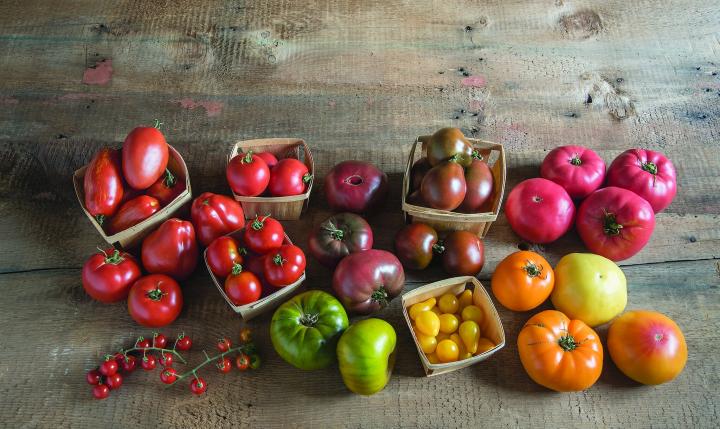Winter has barely begun, but if you haven't started planning next summer's garden, now is a good time to start. Seed catalogs are already arriving in mailboxes. Here’s how to go about selecting seeds!
Advertisement
Have a Game Plan
Catalogs began to arrive in the mailbox early this year, but before you even look at their new offerings, take stock of what you've got to work with:
- Do an inventory of the seeds you have on hand. Sort out what grew well in your garden and what didn't. No sense getting all excited about new lettuce varieties if you still have six packets of lettuce from last year! With the exception of onion, most seeds last at least a couple years if stored in a cool, dry place. See my post on how long seeds last.
- Set aside any seeds that you don't plan to use this year to give to gardening friends or donate them to a seed swap. If you didn't like something, don't waste space growing it again.
- Speaking of space, be realistic about how much good, sunny growing space you actually have. Make a map or use the Almanac Garden Planner to figure out just how many plants fit in the space.
- How dedicated are you? Do you plan to start your own transplants indoors? Do you only need to purchase seeds that can be direct sown? Remember, the more you plant the more you have to take care of.
- When planning, start with your must-haves then make a wish list for any leftover space.
 Image: Heirloom tomatoes. Credit: Johnny’s Selected Seeds.
Image: Heirloom tomatoes. Credit: Johnny’s Selected Seeds.
Catalogs Are Pure Edutainment
Now that you have a game plan, you can dive in. Whether you prefer paper catalogs or shopping online, both make entertaining and educational reading for gardeners.
(See the Almanac's list of U.S. seed catalogs and Canadian seed catalogs.) When it comes to catalogs, the more, the merrier since they all have difference specialties.
The paper catalogs are often beautiful and it's a joy to turn the pages while sipping a hot drink in front of the fire. Plus, who could deny the beauty of heirloom catalog art?
In addition, the catalogs are full of no-nonsense planting and growing advice—as well as information on new introductions and old reliables.
- Learn about types of seeds: F1 and F2 hybrids, heirlooms, which plants are open-pollinated (so you can save the seeds for next year), and what is patent protected.
- Disease resistances are noted, so if late blight always takes out your tomato plants, look for resistant varieties.
- Drought-tolerant varieties that stand up to summer heat are especially helpful to gardeners in warmer climates.
- The number of days to maturity is important, especially for northern gardeners whose growing season may come to an abrupt halt before their plants start producing anything edible.
- Make note of the number of seeds in a packet. If you are getting 100 broccoli seeds, maybe you can team up with your neighbors and pool your orders. Pinetree sells small packets, perfect for the home gardener, and some companies like Renee's Garden offer collections and mixes, which allow you to grow a wider variety of plants without having to buy individual packets of each one.
- Many regional seed companies, like Fedco and non-profits Seed Savers Exchange and Native Seeds/SEARCH, will let you know the back-story of their seeds, as well as where and how they were grown. Some companies, like Fedco, are co-operatives, which keeps prices low. Others, like Johnny's Seeds, are employee-owned.
- Consider seed companies that aren't just corporations that buy and resell seed, but actually grow many of their own seed crops—such as High Mowing Seeds, Johnny’s Selected Seeds, and Sand Hill Preservation Center.
- Each has its specialties. Baker Creek Heirloom Seeds offers only heirlooms and interesting Asian varieties, while Totally Tomatoes offers—you guessed it—mainly tomatoes. Some, like High Mowing and Hudson Valley, offer only organic, open-pollinated seeds.
- Many, like Johnny's and Botanical Interests, are full of growing advice. There are many more great seed companies to choose from.
While perusing the catalogs and websites, try not to be "seeduced" by the lavish descriptions and glossy enhanced photos (we call it garden porn). Chances are your plants will never look like or produce as much as promised in the catalog. (See my previous post on reading between the lines in the seed catalogs.)
Start seed shopping soon and you'll be transported to your ideal summer garden. The number of new gardeners out there has blossomed in recent years, so order early.
The best advice I can give this year is not to overbuy. No hoarding!
Starting Seeds
Once you've got your seeds in hand, it's time to get them started! Read all about how to start seeds indoors to get a jump on the growing season, or learn about direct-sowing seeds in the garden outdoors.

Comments